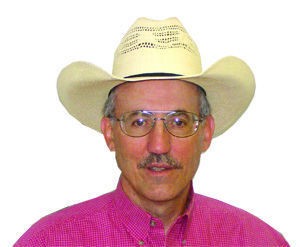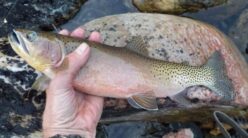With the 100-plus temperatures, it’s hard to think about much else but fishing, swimming and heading to the nearest shady tree.
But if you peek ahead on your calendar, you’ll shockingly see that archery elk and deer season is not even two months away. Wow, hard to believe. It seems like the temps barely turned hot and it’s now time to prepare for it to get cold again.
So what does that mean? Well, if you’re an archery hunter then you have to do more preparation than a rifle hunter. Not only do you have to sight in your bow, but you have to do an inordinate amount of practice if you want to be successful.
Sure, I’ve called elk within spitting distances before but a whole lot more of the time they stop and hold up at 40-plus yards. So what that translates into is that if you can’t make a few longer shots, then you’ll miss out on 75 percent of the opportunities.
To make sure that I’m clear, after elk get to the 40-yard mark, they start getting super wary. So, it’s a whole lot different getting one coaxed in to 15 yards than it is to get them to 40 yards.
So if you have a few minutes here and there, you ought to start practicing. I just got a new Obsession bow so I really need to practice. I mounted a Copper John sight on, so it’s new to me, too. As you know, any changes you make, you need to practice to become accustomed to them.
When you practice, you want to use the same type of arrows that you’ll be hunting with and field tips of the same weight as your broadheads. You may not want to practice with your hunting arrows but have a separate set.
Next item on your list is a target. I recently grabbed a Morrell Double Duty target. It is advertised as being able to handle arrows with speeds of up to 400 feet per second. In fact, I’ve been using mine to test the new Benjamin Airbow, which spits out arrows at 420 feet per second, so the target can handle any bow you own.
Now that you have your target, let’s get started. I’ve bow hunted for nearly 40 years, but by no means claim to be an expert. But here’s my advice — the more you practice, the better it is (up to a point).
You want to build up muscle strength, which will come with repetitive shooting. Don’t make the mistake of setting your poundage at some outlandish weight. Set it for what you’re comfortable with. Plenty of deer have been killed with down to 40 pounds. The more, the better, but don’t worry about hitting 70-80 pounds just because that’s what your hero shoots or it’s what you read somewhere.
I’d say to start off close to build your confidence and to work on your consistency. There’s no use shooting long distances if you’re not even able to get a good group up close. Get where you’re shooting a good group at 20 yards, and then move out to 30 yards, and then eventually 40 yards.
After practicing a while, you can determine at what range you’re effective and then not shoot past that yardage. You don’t want to wound an animal.
Another big item is being able to determine yardages. Five, and for sure 10 yards, can make a huge difference as to where you arrow hits. Due to this, most bow hunters carry a range finder. I can’t tell you how many misses I’ve had due to misjudging the yardage.
And lastly, I don’t know if I can adequately verbalize this thought, but if you’re slightly wobbling, don’t try to jerk the trigger as it crosses the target or you’re pull off further than ever. Just keep squeezing smoothly and let it go when it does, and you’ll end up with better groups.
Tom Claycomb lives in Idaho and has outdoors columns in newspapers in Alaska, Idaho, Utah, Nevada, Colorado and Louisiana. He also writes for various outdoors magazines and teaches outdoors seminars at stores like Cabela’s, Sportsman’s Warehouse and Bass Pro Shop.



